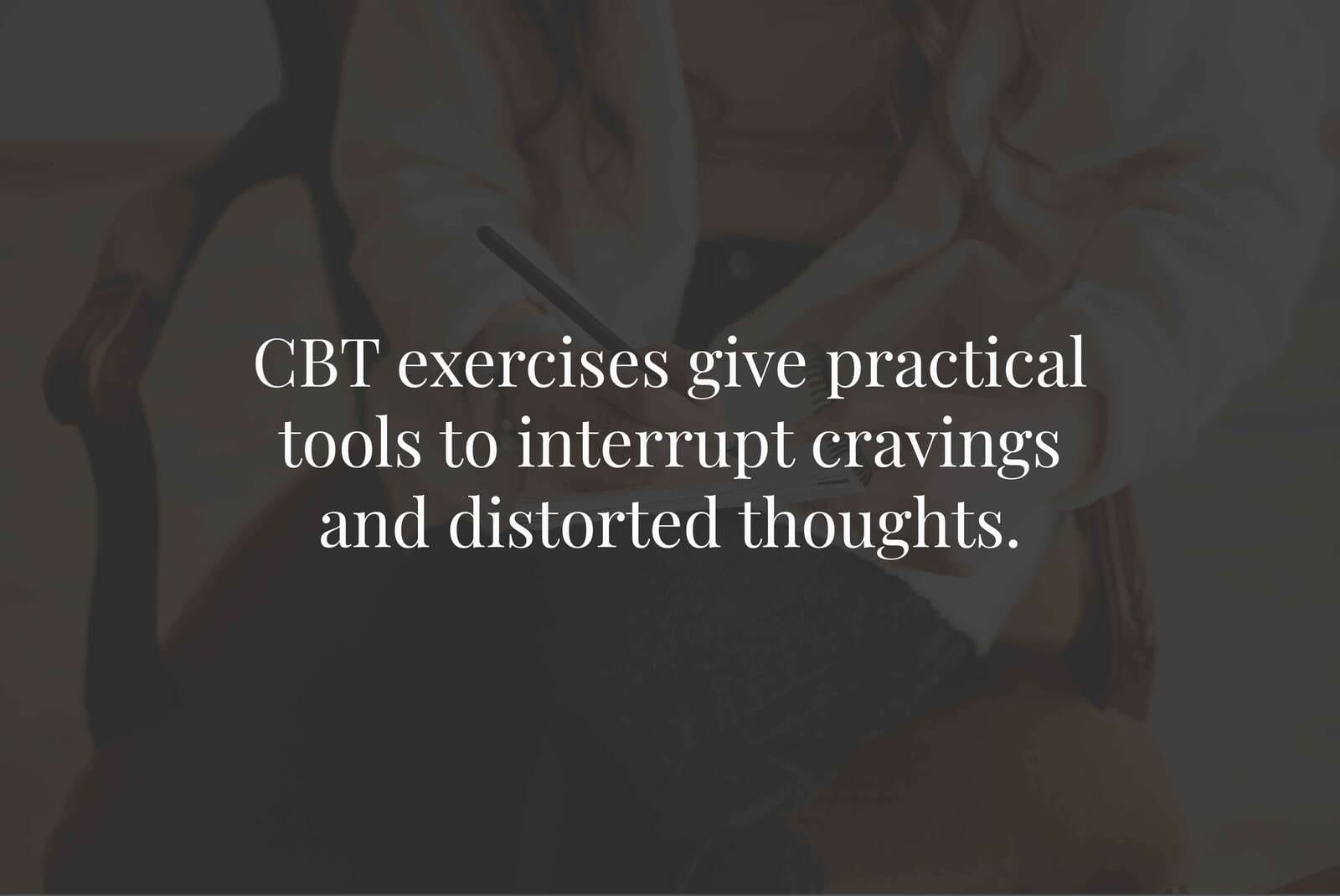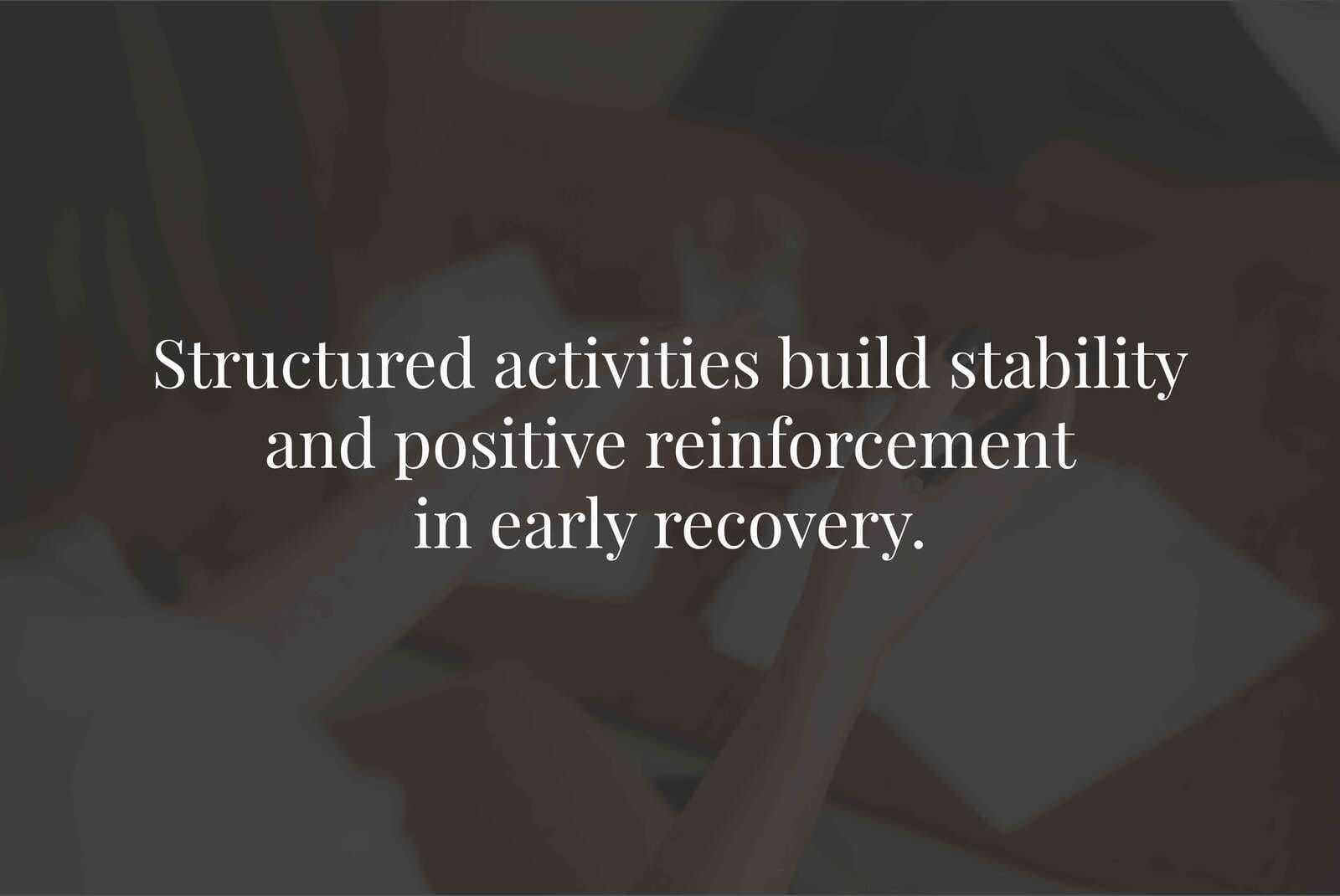Cognitive Behavioral Therapy (CBT) is one of the most evidence-backed approaches for treating addiction. In early recovery, structured CBT exercises can help individuals recognize triggers, manage cravings, and develop healthier thought patterns before relapse becomes a risk.
This article explores five core CBT exercises tailored for early recovery and explains how each supports lasting sobriety.
1. Thought-Stopping Technique
Thought-stopping interrupts unwanted or distressing thoughts that lead to cravings or self-destructive behavior. The goal is to mentally or physically break the chain of thought before it escalates.
How It Works:
- When you notice a triggering thought (e.g., “I need a drink to relax”), mentally shout “Stop!”
- Some people benefit from saying it out loud or snapping a rubber band on their wrist.
- Immediately replace the thought with a healthier one: “I can call a friend or go for a walk instead.”
Why It Works in Recovery:
Addictive thoughts often start subtly and grow stronger. This exercise creates space to choose a better coping mechanism before the urge becomes overwhelming.

2. Cognitive Restructuring
Cognitive restructuring helps identify distorted thoughts and replace them with rational alternatives.
How To Do It:
- Write down the thought causing distress or craving.
- Identify the distortion (e.g., all-or-nothing thinking, catastrophizing, mind-reading).
- Evaluate the thought for evidence.
- Replace it with a balanced statement.
Example:
- Original Thought: “I’ll never stay sober.”
- Distortion: Fortune telling / hopelessness.
- New Thought: “Recovery is difficult, but I’ve already made progress. One day at a time.”
This builds confidence and self-awareness—two traits crucial for early recovery.
3. Behavioral Activation
Depression and inactivity often occur during the early recovery phase. Behavioral activation schedules positive activities that improve mood and motivation.
Exercise Plan:
- Make a list of rewarding or calming activities like:
- Walking
- Listening to music
- Cleaning
- Journaling
- Calling a friend
- Schedule at least 2–3 daily and track how you feel afterward.
Behavioral activation improves dopamine regulation and gives structure to what might otherwise feel like chaotic days.

4. Functional Analysis
This exercise helps understand what triggers your substance use and what you’re gaining or losing from it.
Steps:
- Trigger: What happened before you wanted to use?
- Thoughts: What did you think in that moment?
- Feelings: What emotions did you feel?
- Behavior: What did you do?
- Outcome: How did you feel afterward?
Example:
- Trigger: Conflict with family.
- Thoughts: “They don’t respect me.”
- Behavior: Isolated, considered drinking.
- Outcome: Shame and regret.
Doing this regularly exposes patterns and guides prevention planning.
5. Gratitude Journaling
While simple, gratitude journaling has profound effects on brain chemistry and mood—both essential in recovery.
Instructions:
- Each morning or evening, write down 3 things you're grateful for.
- Include small wins, such as:
- “I didn’t drink today.”
- “Had a great talk in group therapy.”
- “I made a healthy meal.”
Practicing gratitude promotes positivity and helps reframe negative thought loops.

Using These Exercises With a Therapist
While these exercises can be practiced alone, they are most effective when guided by a CBT-trained therapist. Regular check-ins ensure you’re applying them correctly and evolving your strategy as you progress in recovery.
If you're interested in integrating these tools into a personalized treatment plan, learn more about our CBT therapy program at Studio City Recovery.
Complementary Approaches That Reinforce CBT
CBT vs. DBT
Both CBT and DBT offer powerful frameworks for recovery. DBT adds mindfulness and emotional regulation strategies that work well alongside the structured problem-solving of CBT.
CBT Worksheets: How to Use Them in Recovery
Beyond exercises, worksheets provide structured templates to map thoughts, triggers, and new behaviors. They’re often assigned in therapy and can reinforce what’s learned during sessions.
CBT Thought Records: How to Challenge Cravings and Avoid Relapse
Thought records offer a deeper version of thought-stopping and cognitive restructuring—encouraging you to confront, evaluate, and reshape thinking patterns before relapse occurs.



